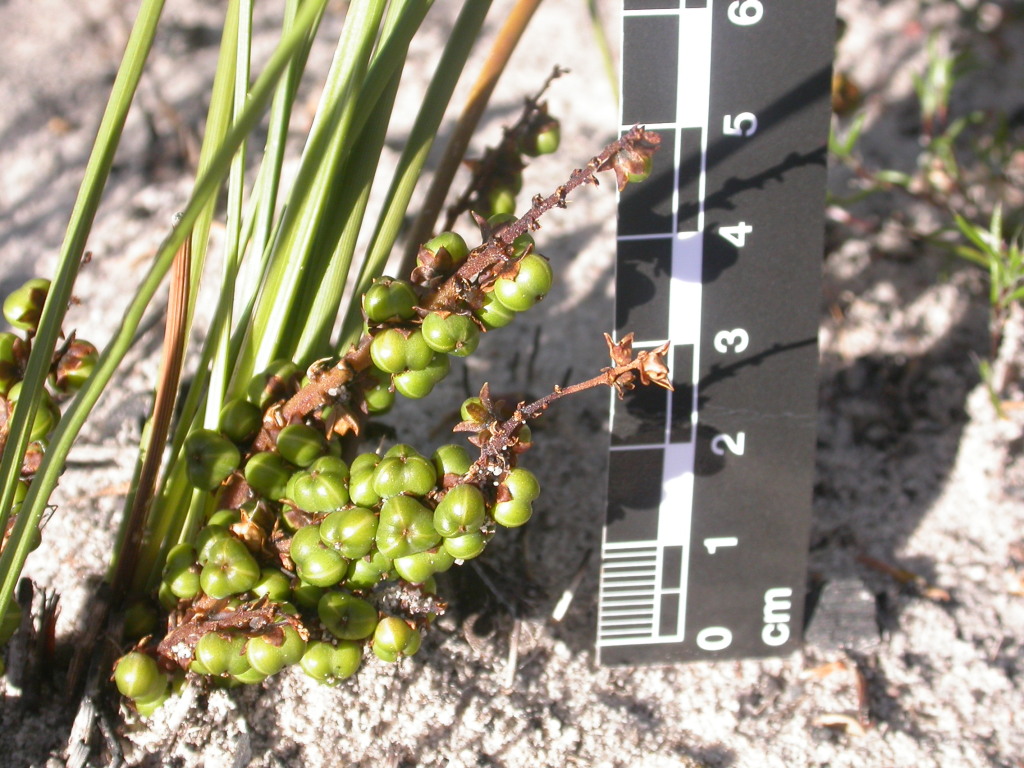Lomandra sororia
(F.Muell. ex Benth.) Ewart Small Mat-rushTussocks usually slender and small. Leaves flat to terete, rigid, 20–40 cm long, 0.7–2 mm wide, green, usually scabrid on margin and in grooves; basal sheath gradually tapering distally, rarely torn, white or purple-brown; apex acute, initially with 1–3 small points. Male and female inflorescences similar, usually unbranched, occasionally with 1 or 2 short branches, 3.5–6.5 cm long, up to c. one-third as long as the leaves; axes usually smooth; non-flowering axis exposed for 1–2.5 cm; flower-bearing axis 1–5.5 cm long. Bracts brown or pale brown, often with purple dots. Male and female flowers similar, sessile, with purple-dots on outer and inner perianth. Flowers Sep.–Nov., rarely at other times of the year.
LoM, MuM, Wim, GleP, Brid, VVP, VRiv, WaP, Gold, CVU, GGr, DunT, HNF. Also SA. Occurs in sandy soils in heathland communities and in Eucalyptus baxteri-, E. goniocalyx- and E. obliqua-dominated woodlands.
Conn, B.J. (1994). Xanthorrhoeaceae. In: Walsh, N.G.; Entwisle, T.J., Flora of Victoria Vol. 2, Ferns and Allied Plants, Conifers and Monocotyledons, pp. 720–734. Inkata Press, Melbourne.
 Spinning
Spinning

